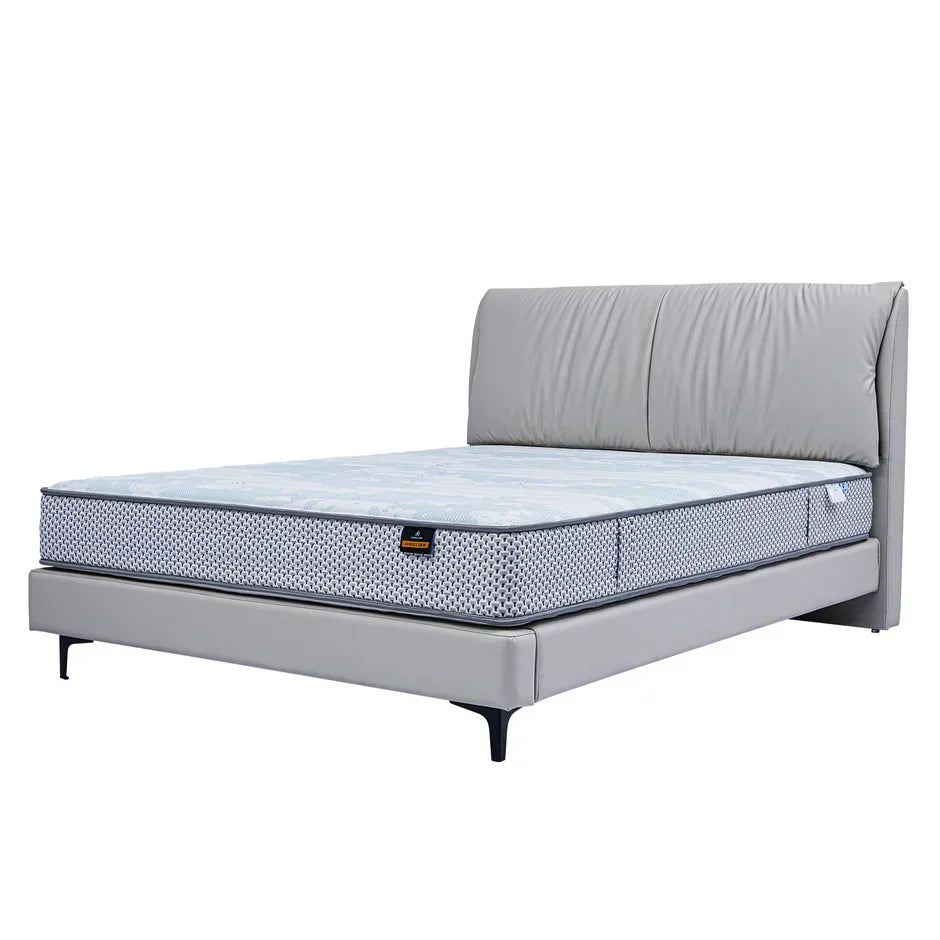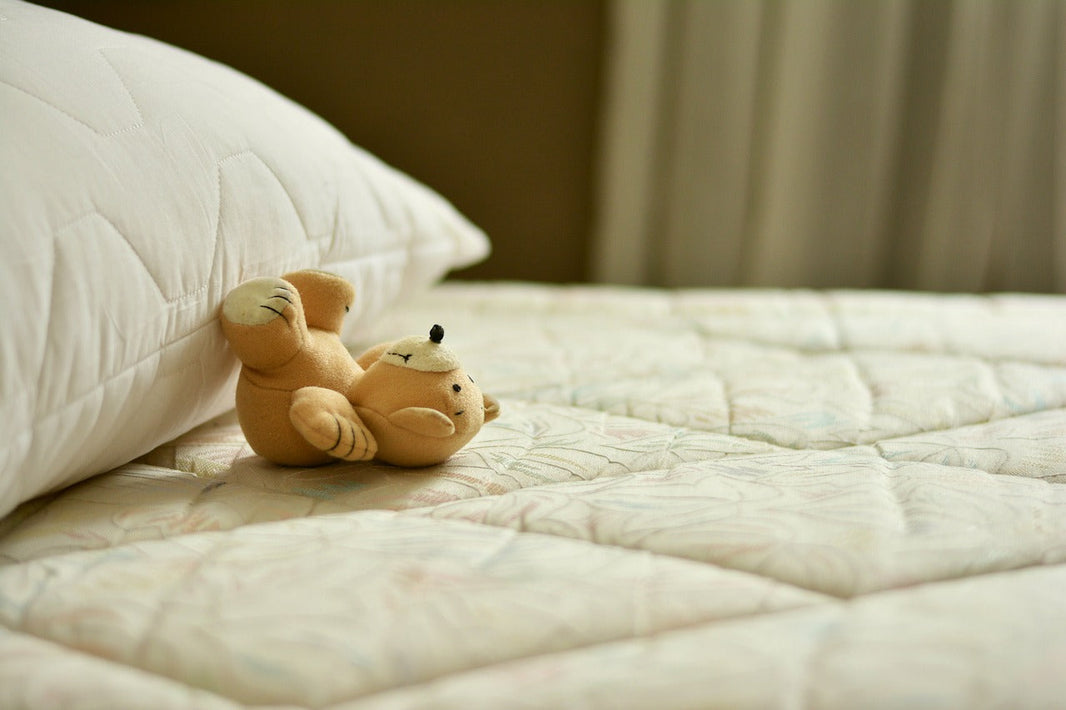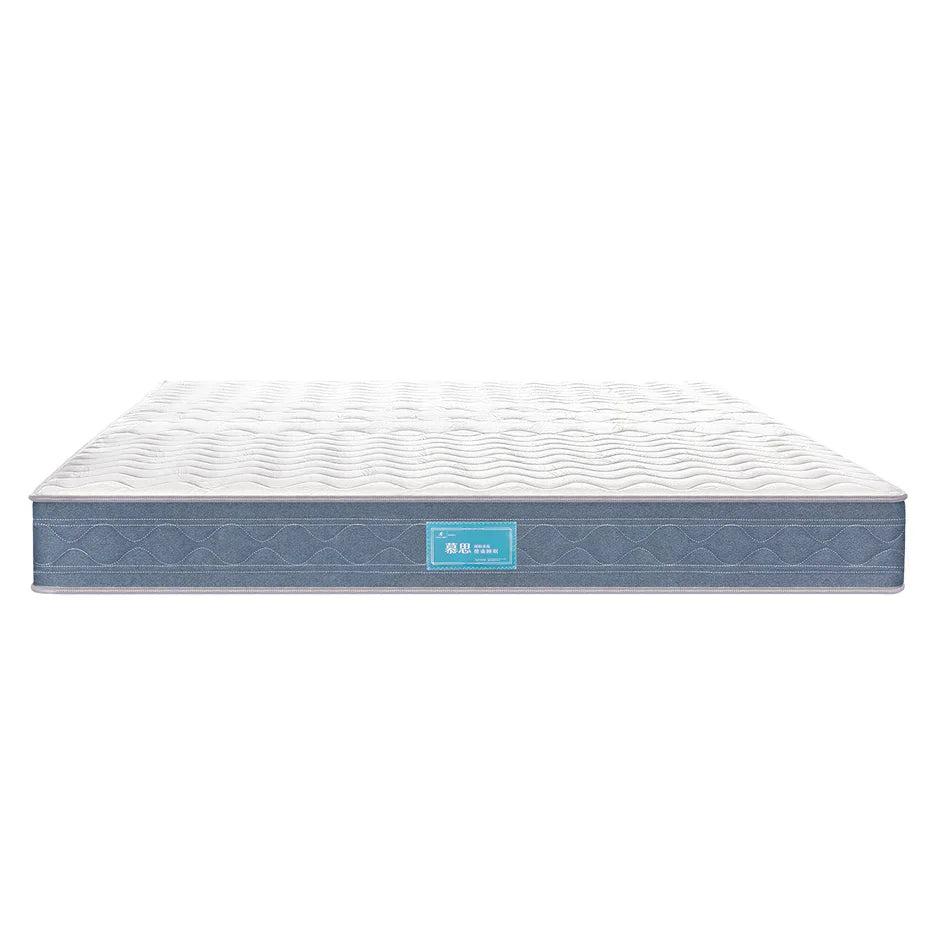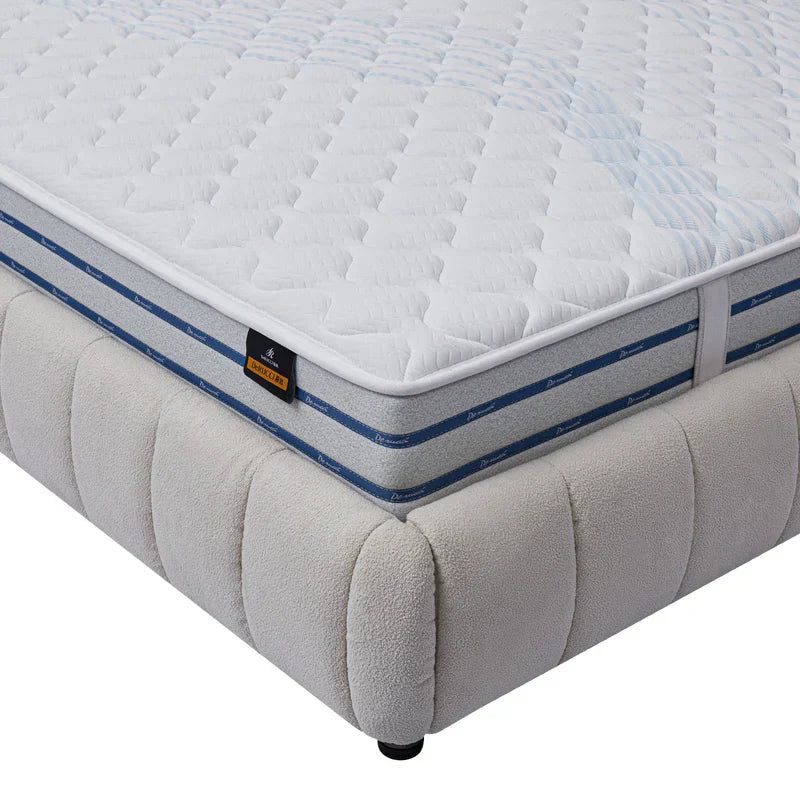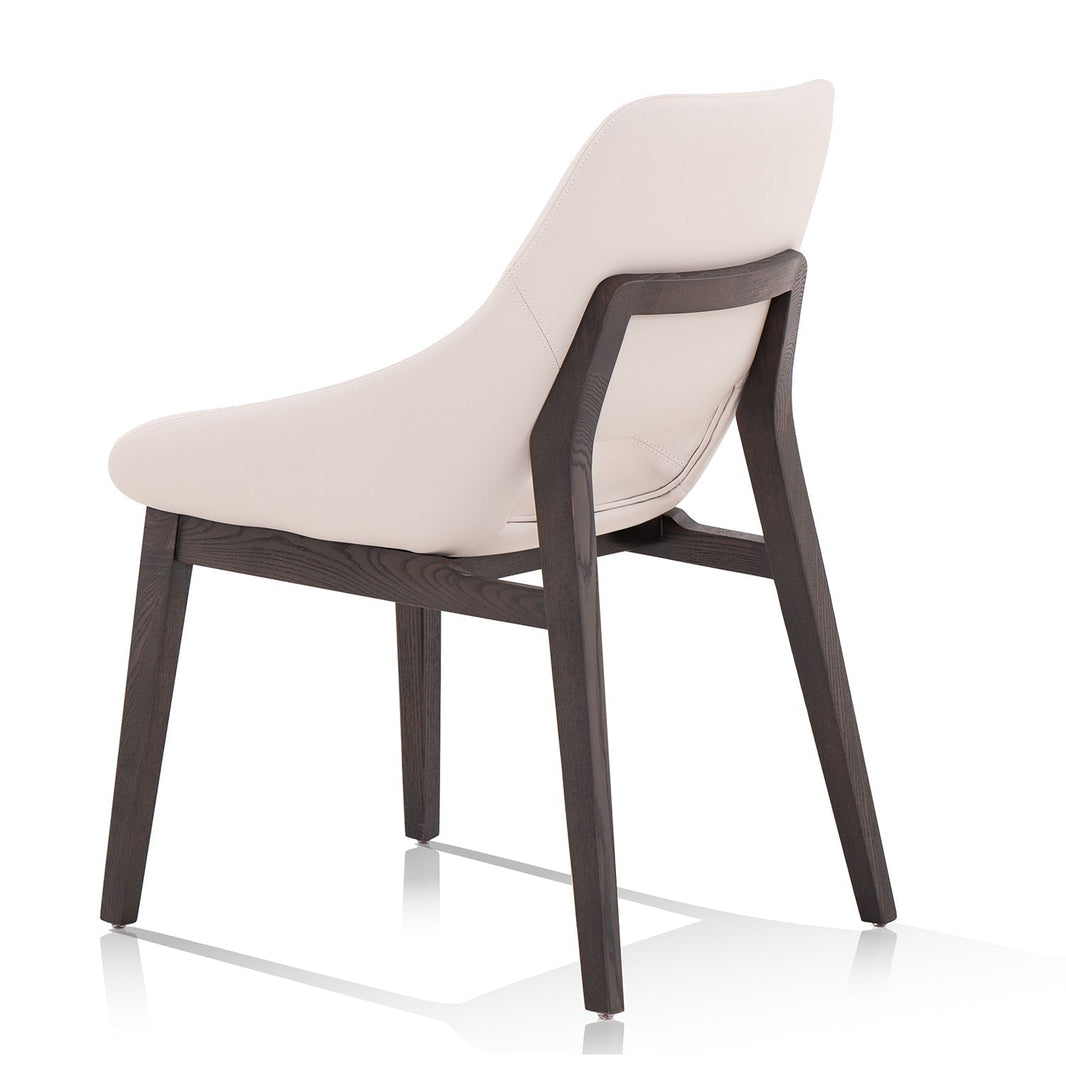A mattress stain can feel like a permanent problem, but removing even tough stains is possible with the right approach. Different types of stains - from coffee spills to pet accidents - need specific cleaning methods to effectively remove them without damaging your mattress. Simple household items like baking soda, vinegar, and hydrogen peroxide work effectively for most common mattress stains when used correctly. The key to successful stain removal lies in quick action and choosing the right cleaning method for each specific type of stain.
Are Mattress Stains Permanent?
No, most mattress stains aren't permanent if you act quickly and use the right cleaning methods. Fresh stains from spills, urine, blood, or food can usually be removed completely when treated immediately with appropriate cleaning solutions. Even older stains can often be significantly reduced or eliminated using specific cleaning techniques like enzyme cleaners, baking soda solutions, or hydrogen peroxide treatments.
However, some stains can become permanent if they're left untreated for too long or if incorrect cleaning methods are used. Deep-set stains that have had time to penetrate the mattress fibers, especially those older than several months, may be more challenging to remove completely. In these cases, while you might not achieve perfect results, you can still significantly improve the appearance of the stain through proper cleaning techniques or consider consulting professional mattress cleaners for stubborn stains.
What Are The Most Common Mattress Stains?
Before starting any cleaning process, you need to identify what type of stain you're dealing with. Most mattress stains fall into four main categories, each requiring different cleaning methods and solutions. Here are the most common types of mattress stains and their basic characteristics:
Pet and Child Urine Stains
Urine stains are typically yellow or brown round spots on your mattress surface. Fresh urine stains have a pungent ammonia smell that intensifies with time if not treated. Dry urine stains usually create crusty patches and produce dark rings around the edge. The longer the urine sits in mattress fibers, the harder it is to get rid of the stain and odor.
Blood Stains
Blood marks start out as red spots but become brown or rust spots once they dry. Blood marks penetrate very rapidly into the fibers of a mattress and become particularly difficult to remove once it has had time to set. Fresh blood marks are easier to clean than older ones, which become crumbly and further entrenched in the fabric.
Food and Drink Marks
Food and beverage stains are very varied in type and severity. Coffee creates brown spots that expand quickly if not wiped off right away. Red wine creates purple or reddish spots that are permanent if not wiped off right away. Sweet beverages like soda create a sticky residue that dirt is drawn to and can create darker, more noticeable stains over time.
Body Fluid Stains
Sweat and oil body stains accumulate over time, resulting in yellowish-brown discoloration where people sleep most often. The stains have a musty odor and are most noticeable on light-colored mattresses. The accumulation is normal over time with heavy use, especially in warm climates or if you tend to sleep hot.
How to Remove Mattress Stains Step by Step
A successful mattress stain removal requires a systematic approach. Following these essential steps in order will give you the best chance of completely removing the stain while protecting your mattress:
Step 1: Remove All Bedding
Take off all sheets, mattress protectors, and bedding the moment you notice a stain. Place these in the washing machine right away. New stains on bedding can switch back to your mattress if they are left in contact.
Step 2: Act on Fresh Stains Quickly
For new wet stains, blot out as much liquid as possible using clean white paper towels or cloths. Press firmly but not rub, as rubbing will push the stain deeper into the mattress fibers. Continue to blot with fresh, dry towels until no liquid is picked up by the towel.
Step 3: Test Your Cleaning Solution
Always try a small inaccessible area on the mattress prior to applying any cleaning solution to the stain. Allow it to sit there for 5-10 minutes so that it doesn't cause color alteration or damage. Having ensured it's safe, then gently apply the cleaning solution.
Step 4: Clean with Gentle Pressure
Apply your chosen cleaning solution using a clean white cloth, working from the outside of the stain toward the center. This technique prevents the stain from spreading further. Blot gently - never scrub or rub aggressively, as this can damage mattress fibers.
Step 5: Dry Thoroughly
After cleaning, blot with clean, dry towels to remove excess moisture. Have a fan blowing directly on the cleaned area or open windows to provide better air circulation. Never sleep on a damp mattress - allow 8-12 hours of drying time to prevent mold and mildew.

Best Cleaning Solutions for Different Mattress Stains
Now that you know the basic stain removal steps, each type of stain needs its own specific cleaning approach. Different stains need different cleaning approaches - picking the right method makes all the difference in getting your mattress clean again.
How to Clean Urine Stains
- Mix equal parts white vinegar and cold water in a spray bottle
- Spray lightly on the stain and blot with clean white cloths
- Sprinkle baking soda over the damp area and let it sit for 8-10 hours
- Vacuum the dried baking soda thoroughly
- For stubborn odors, repeat the process as needed
The combination of vinegar and baking soda not only removes the stain but also eliminates odors. Give your mattress plenty of time to dry before making the bed.
Removing Blood Stains
For fresh blood: blot with cold water and a clean white cloth
- Never use warm or hot water as it sets the stain
- Apply hydrogen peroxide directly to the stain
- Let it sit for 5-10 minutes, then blot with a clean dry cloth
- Repeat if necessary until the stain lifts
The faster you act on blood stains, the easier they are to remove. Cold water and hydrogen peroxide are your best tools for tackling these tough spots.
Cleaning Food and Drink Stains
- Mix one teaspoon of mild dish soap with two cups of cold water
- Apply the solution lightly with a clean white cloth
- Blot, don't rub, working from the outside toward the center
- Use clean water to remove soap residue
- For wine or coffee stains, add a small amount of white vinegar to the solution
Gentle blotting and the right cleaning solution can lift most food and drink stains. Taking your time and avoiding excess moisture will give you the best results.
Treating Sweat and Body Oil Stains
- Use an enzyme-based cleaner specifically designed for protein stains
- Apply the cleaner lightly to avoid soaking the mattress
- Allow the cleaner to sit for 15-20 minutes
- Blot with a clean, damp cloth to remove residue
- Use a fan to dry the area completely
- Consider using a mattress protector to prevent future stains
A good enzyme cleaner and proper drying time will tackle most sweat and oil stains. Adding a mattress protector helps prevent these common stains from coming back.
When Is a Stain Too Tough to Remove?
A stain can be considered stubborn when it persists after multiple cleaning attempts using appropriate cleaning solutions. You'll notice these resistant stains remain visible even after three thorough cleaning sessions, and the color may have deeply penetrated the mattress fibers. Additionally, if you detect lingering odors or feel a stiff, crusty texture in the stained area despite cleaning, you're likely dealing with a stubborn stain.
How Can You Remove Really Stubborn Mattress Stains?
After you have tried the standard cleaning methods on specific stains, you might find yourself with some stains that are resistant and won't budge. Although fresh stains will respond readily to early intervention, older or set stains may require more extreme solutions. For resistant stains that won't give in to standard cleaning methods, use these more extreme solutions:
- Steam Cleaning: Deep-set stains can be easily cleaned by a professional with steam cleaning. Steam cleaning with a steam cleaner and upholstery attachment on a medium heat level allows the deep penetration of steam into mattress fibers. Always give a full 24-hour drying time after steam cleaning to prevent moisture issues.
- Professional Cleaning Services: Professional mattress cleaners use equipment that is industrial-strength and specialized cleaning products. When selecting a service, verify experience with difficult stains and request full explanations of their cleaning process and success rate. Always obtain a written estimate before having a professional cleaning.
- Enzyme-Based Solutions: Professional enzyme cleaners can break down protein-based stains that ordinary cleaners cannot. Spray the enzyme cleaner generously onto the stained area and allow it to work for 24-48 hours. You can use fans to speed up the drying process, and you may need to re-treat for optimal results.
Time for a New Mattress?
Sometimes replacement is the most practical solution. Consider purchasing a new mattress if the stain covers a large portion of the surface (more than 30%), shows signs of mold or mildew, or continues to resist multiple cleaning attempts. Additionally, if you notice the stain affecting your sleep quality or causing allergic reactions, replacement might be the healthiest choice.
What Can You Make at Home to Remove Mattress Stains?
While commercial cleaners and professional services can be effective, many powerful stain-removing solutions can be made with common household ingredients. These DIY solutions are not only cost-effective but also environmentally friendly, and they're particularly useful for treating fresh stains before they become stubborn problems.
1. Basic Baking Soda Solution
Baking soda is a gentle cleaner that removes color and odors naturally. To create a solution, take one part of baking soda and two parts of cold water to create a paste. Apply the solution directly to the stain, allow it to sit for 30 minutes, and then vacuum. The solution works very well when applied to sweat spots and light color spots.
2. Simple Vinegar Solution
White vinegar's acidity is a great stain remover. Combine white vinegar with an equal amount of water in a spray bottle. Spray a light mist on the stained area, gently blot with a cloth, and dry. It works particularly well at breaking up protein stains and deodorizing.
3. Hydrogen Peroxide Mixture
For tougher stains, like blood or wine, combine equal amounts of hydrogen peroxide (3%) and mild dish soap. Slowly pour the solution onto the stain using a white cloth, working from the outside in. Allow it to sit for 10 minutes, then blot with a damp cloth. Test this solution first on a small, out-of-the-way area because hydrogen peroxide can bleach some colors.
4. Lemon and Salt Treatment
Prepare a natural brightening paste by mixing fresh lemon juice and table salt to a thick consistency. It works well on yellow stains and light discoloration. Apply the paste to the stain, let it stay for 30-60 minutes, and wipe clean with a damp cloth. Citric acid in lemon dissolves the stains, and salt is a gentle abrasive.
Safety Tips and Best Practices
- Always test homemade solutions on a small, inconspicuous area first
- Never oversaturate your mattress with any cleaning solution
- Allow complete drying between applications
- Keep windows open for proper ventilation while cleaning
- Store any leftover solutions in clearly labeled containers
- Don't mix different cleaning solutions to avoid harmful chemical reactions
Get Rid of Mattress Stains With These Simple Steps
Your mattress doesn't have to stay stained forever - there's a solution for every type of stain you might face. This guide has shown you everything from quick DIY fixes to professional cleaning options, helping you choose the best method for your specific situation. Don't let stains affect your sleep quality - tackle them right away using these proven cleaning techniques. Remember to protect your mattress with a waterproof cover to prevent future stains, and when in doubt about a tough stain, professional cleaners are just a call away. A clean mattress means better sleep, so take action today using these simple, effective cleaning methods.
Common Questions About Mattress Stain Removal
Q1: What is the best thing to clean mattress stains with?
The best cleaner depends on the stain type. For most stains, a mixture of baking soda and white vinegar works well. For protein-based stains like blood or urine, use enzyme cleaners. For general stains, a solution of mild dish soap and cold water is effective and safe.
Q2: Does shaving foam remove stains from a mattress?
Yes, regular white shaving foam can help remove some light stains. Apply it to the stain, let it sit for 10 minutes, then blot with a damp cloth. However, it's not as effective as dedicated cleaning solutions for tough or set-in stains.
Q3: How often should you replace your mattress especially when the stain cannot be removed?
Replace your mattress if:
- It's over 7-10 years old
- The stains cover more than 30% of the surface
- There are signs of mold or mildew
- The stain causes odors that won't go away
- You notice sagging or structural damage
- The stain affects your sleep quality
Q4: Is hydrogen peroxide safe on the bed?
Yes, 3% hydrogen peroxide is safe for most mattresses, but always test it on a small hidden area first. Use it sparingly and dilute it with equal parts water. Don't use it on memory foam mattresses as it can break down the material. Let the mattress dry completely after application.




